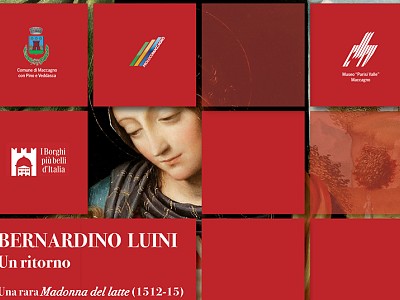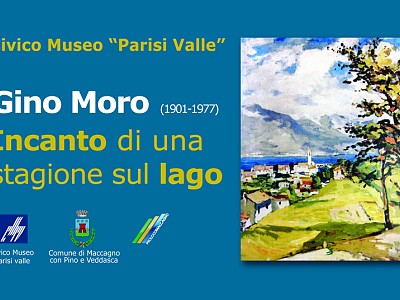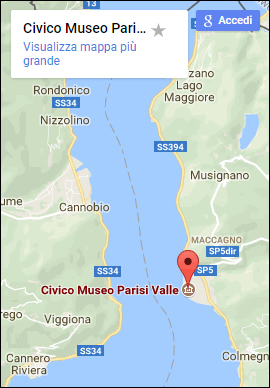“Treasures from the Vault. Picasso Balla de Chirico Guttuso Fiume Levi Cassinari”.
Exploring the collection 1
Masters of international graphics
in the collections of Giuseppe Vittorio Parisi
Picasso, Balla, De Chirico, Guttuso, Fiume, Bruno Cassinari, Carlo Levi.
These names alone stand for the significance of the graphic collection, mainly drawings, gathered by Giuseppe Vittorio Parisi (Maccagno 1915; Rome 2009). Many pieces joined the collection thanks to exchanges and presents during his years in Milan (1930s), during his artistic career in Rome and on occasion of his trips to Paris, where he met De Chirico and Picasso.
The collection is important, though, for many other reasons. This is proven by the sheer number of works, more than 300 of which by other artists.
Moreover, it covers a large time span ranging from the four precious pencil drawings by the Roman artist Bartolomeo Pinelli (1771/1835) to the infomal and abstract experiments of the post-war period. This era is represented by a small fraction of works including sculptural research and graphic design, by artists like Pietro Consagra, Pericle Fazzini, Giuseppe Capogrossi and Ettore Colla, who worked in Rome with Burri and Parisi in the Gruppo Origine. Much space is dedicated to important artists such as Salvatore Fiume, here on display with about 40 selected pieces including drawings and prints donated by the Sicilian artist to Parisi in the course of their close friendship.
Finally, the exhibition is divided into “schools”: the painter and poet Toti Scialoja, with the fluid Case a Trastevere (1946/47), completes the large group of Roman artists. The vast range of “Milanese” artists well documents the transition from the 1930s (Gianfilippo Usellini and Trento Longaretti) to the works of the post-war period, culminating in the loss of all certainties.
Particularly significant in this regard is the comparison between the nude Atleta in riposo by Italo Valenti (1936), powerful but still rhetorical, and the dramatic male portrait by Bruno Cassinari (about 1950). In the three outstanding pencil drawings by Eugenio Birolli (1947) the debt to Picasso is only a tribute, proposing a dark vision of the desperate work of civil and material reconstruction after the catastrophe. The reference to Picasso is also evident in the two early works by Guttuso and in the work of Giulio Turcato (1947/48), although both demonstrate to have already developed a language of their own. In the case of Guttuso, it would dissolve into the theme of the body, as becomes obvious in the two female nudes painted at a distance of only a few years.
The “espansioni” by Giacomo Balla (whom Parisi met on several occasions in Rome) and the sketch for the Turkish Bath by Picasso of 1921 show how even the outstanding artists of the 20th century felt the need to overcome the rigid formulas of the avant-garde and recover human and sensorial elements. In Balla’s case, this can clearly be seen comparing the dynamic Espansione fiore (significantly still signed Futurballa) to the fascinating Espansione profumo, even though both works are from the same decade, the 1930s. Already in its title, the small but essential ink drawing by Picasso is in the line of a research that had long since been rediscovering a personal and collective heritage, the Mediterranean tradition, with significant reflection on the forms of bodies, symbols and architecture. De Chirico had dedicated his whole life to the Mediterranean man: the elaborate pastel from the museum’s collection (1929/30) confirms the relevance of a lifetime research and the fortunate grafting of Surrealist influences onto the Greek artist.
The nude in pencil and watercolour by Carlo Levi (1950), a well-known literary author from Turin (Cristo si è fermato a Eboli), with its closely entangled bodies, has a capacity of expression that allows the drawing to transcend the limitations of the sketch to make it a more complete form of expression (Federico Crimi).
The exhibition will remain open until 29 October 2023.
Hours: Friday from 15.00 to 19.00 Saturday and Sunday from 10.00 to 12.00 and from 15.00 to 19.00
Poster (click to enlarge)
Pictures of the exhibition (click to enlarge)
Photographs by Daniela Domestici (“all rights reserved”)
https://www.museoparisivalle.it/en/the-exhibits/treasures-from-the-vault-picasso-balla-de-chirico-guttuso-fiume-levi-cassinari#sigProId0098a546a3










